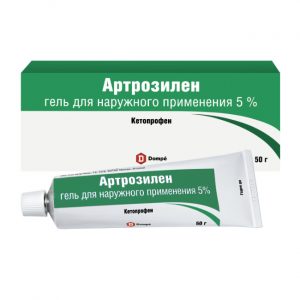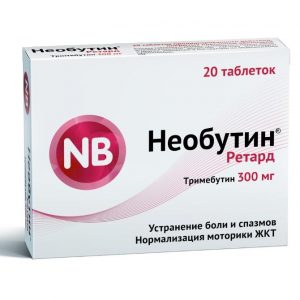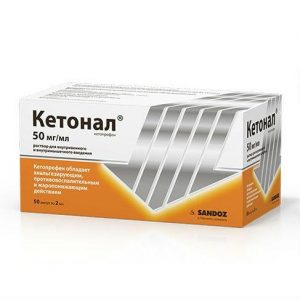Description
Latin name
Ketorol
Release form
Coated tablets.
packaging 20 pcs
Pharmacological action
Pharmacodynamics
Nonsteroidal anti-inflammatory drug (NSAID), has a pronounced analgesic effect, has anti-inflammatory and moderate antipyretic effect.
The mechanism of action is associated with non-selective inhibition of cyclooxygenase (COX) activity – COX-1 and COX-2, which catalyzes the formation of prostaglandins from arachidonic acid, which play an important role in the pathogenesis of pain, inflammation and fever. Ketorolac is a racemic mixture [-] S and [+] R enantiomers, the analgesic effect being due to the [-] S form.
The analgesic effect is comparable to morphine, significantly superior to other NSAIDs. The drug does not affect opioid receptors, does not depress respiration, does not cause drug dependence, does not have a sedative and anxiolytic effect.
After oral administration, the development of an analgesic effect is observed after 1 hour.
Pharmacokinetics
When ingested, ketorolac is well and rapidly absorbed in the gastrointestinal tract (GIT). The bioavailability of ketorolac is 80-100%, the maximum concentration (Cmax) after oral administration of 10 mg is 0.82-1.46 μg / ml, the time to reach the maximum concentration (TCmax) is 10-78 minutes. Foods rich in fats reduce the maximum concentration of the drug in the blood and delay its achievement by an hour. Communication with plasma proteins – 99%.
The time to reach equilibrium drug concentration (Css) with oral administration of 10 mg 4 times a day is 24 hours and the concentration is 0.39-0.79 μg / ml. Distribution volume – 0.15-0.33 l / kg. In patients with renal failure, the volume of distribution of the drug may increase by 2 times, and the volume of distribution of its R-enantiomer – by 20%.
Penetrates into breast milk: when the mother takes 10 mg of Ketorolac Cmax in milk, it is reached 2 hours after the first dose and is 7.3 ng / ml, 2 hours after applying the second dose of ketorolac (when using the drug 4 times a day) – 7.9 ng / l.
More than 50% of the administered dose is metabolized in the liver to form pharmacologically inactive metabolites. The main metabolites are glucuronides, which are excreted by the kidneys, and p-hydroxyketorolac. It is excreted by 91% by the kidneys, 6% – through the intestines.
The half-life (T1 / 2) in patients with normal renal function is on average 5.3 hours (2.4-9 hours after oral administration of 10 mg). T1 / 2 increases in elderly patients and shortens in young patients. Impaired liver function does not affect T1 / 2. In patients with impaired renal function, with a plasma creatinine concentration of 19-50 mg / l (168-442 mmol / l), T1 / 2 – 10.3-10.8 hours, with more pronounced renal failure – more than 13.6 h
With oral administration of 10 mg, the total clearance is 0.025 l / h / kg in patients with renal failure (at a plasma creatinine concentration of 19-50 mg / l) – 0.016 l / h / kg.
Not excreted by hemodialysis.
Indications
Pain of severe to moderate severity: trauma, toothache, pain in the postpartum and postoperative period, cancer, myalgia, arthralgia, neuralgia, radiculitis, dislocation, sprain, rheumatic diseases.
Designed for symptomatic therapy, reducing the intensity of pain and inflammation at the time of use, does not affect the progression of the disease.
Contraindications
Hypersensitivity to ketorolac
complete or incomplete combination of bronchial asthma, recurrent nasal polyposis or paranasal sinuses and intolerance to acetylsalicylic acid and other ulcers of the gastrointestinal ulcer , active gastrointestinal bleeding cerebrovascular or other bleeding
inflammatory bowel disease (Crohn s disease, ulcerative colitis) in the exacerbation phase
hemophilia and other blood clotting disorders
decompensated heart failure
liver failure or active liver disease less severe liver disease 30 ml / min), progressive kidney disease, confirmed hyperkalemia
period after coronary artery bypass grafting Bani
lactase deficiency, lactose intolerance, glucose-galactose malabsorption
pregnancy, childbirth, lactation
Children up to age 16 years.
Precautions:
Hypersensitivity to other NSAIDs, bronchial asthma, coronary heart disease, congestive heart failure, edema syndrome, arterial hypertension, cerebrovascular disease, pathological dyslipidemia / hyperlipidemia, impaired renal function (creatinine clearance 30-60 ml / min), diabetes mellitus, cholestasis, active hepatitis, sepsis, systemic lupus erythematosus, peripheral arterial disease, smoking, concomitant use with other non-steroidal anti-inflammatory drugs, old age (over 65 years), anamnestic data on the development of gastrointestinal ulcer, alcohol abuse, t severe somatic diseases, concomitant therapy with the following drugs: anticoagulants (e.g. warfarin), antiplatelet agents (e.g. acetylsalicylic acid, clopidogrel), oral glucocorticosteroids (e.g. prednisone), selective serotonin reuptake inhibitors (e.g. citalopram, fluoxetine, paroxetine, sertraline).
Use during pregnancy and lactation
Ketorol is contraindicated in pregnancy and lactation.
Composition of
Each film-coated tablet contains:
Active ingredient:
ketorolac tromethamine (ketorolac trometamol) – 10 mg
Auxiliary substances:
microcrystalline cellulose 121 mg, srdlpmc lm colloidal dioxide 4 mg,
magnesium stearate 2 mg,
carboxymethyl starch sodium (type A) 15 mg
Coating:
hypromellose 2.6 mg,
propylene glycol 0.97 mg,
titanium dioxide 0.33 mg olive green dye (
quinoline yellow 78%, diamond dye cyan 22%) 0.1 mg.
Dosage and administration
In the form of tablets is administered orally in a single dose of 10 mg. With severe pain, the drug is taken repeatedly at 10 mg up to 4 times a day, depending on the severity of the pain. The maximum daily dose should not exceed 40 mg. The minimum effective dose should be used. When taken orally, the duration of the course of treatment should not exceed 5 days.
When switching from parenteral administration to oral administration, the total daily dose of both dosage forms on the day of transfer should not exceed 90 mg for patients from 16 to 65 years old and 60 mg for patients older than 65 years or with impaired renal function. In this case, the dose of the drug in tablets on the day of transition should not exceed 30 mg.
Side effects
The frequency of side effects is classified according to the frequency of occurrence of the case: often (1-10%), sometimes (0.1-1%), rarely (0.01-0.1%), very rarely (less 0.01%), including individual messages.
From the digestive system: often (especially in elderly patients over 65 who have a history of erosive and ulcerative lesions of the gastrointestinal tract) – gastralgia, diarrhea less often – stomatitis, flatulence, constipation, vomiting, a feeling of fullness of the stomach rarely – nausea, erosive and ulcerative lesions of the gastrointestinal tract (including those with perforation and / or bleeding – abdominal pain, spasm or burning in the epigastric region, melena, vomiting like coffee grounds, nausea, heartburn, and others), cholestatic jaundice, hepa tit, hepatomegaly, acute pancreatitis.
From the urinary system: rarely – acute renal failure, lower back pain with or without hematuria and / or azotemia, hemolytic-uremic syndrome (hemolytic anemia, renal failure, thrombocytopenia, purpura), frequent urination, increase or decrease in urine volume, nephritis, edema of renal origin.
On the part of the sensory organs: rarely – hearing loss, tinnitus, visual impairment (including blurred visual perception).
From the respiratory system: rarely – bronchospasm, shortness of breath, rhinitis, laryngeal edema.
From the central nervous system: often – headache, dizziness, drowsiness, rarely – aseptic meningitis (fever, severe headache, cramps, stiff neck and / or back muscles), hyperactivity (mood changes, anxiety), hallucinations, depression, psychosis .
From the cardiovascular system: less often – increased blood pressure rarely – pulmonary edema, fainting.
From the hemopoietic organs: rarely – anemia, eosinophilia, leukopenia.
From the hemostatic system: rarely – bleeding from a postoperative wound, nosebleeds, rectal bleeding.
From the skin: less often – a skin rash (including maculopapular rash), purpura rarely – exfoliative dermatitis (fever with chills or without, redness, tightening or peeling of the skin, swelling and / or tenderness of the tonsils), urticaria, Stevens syndrome – Johnson’s Lyell Syndrome.
Allergic reactions: rarely – anaphylaxis or anaphylactoid reactions (discoloration of the face, skin rash, urticaria, itching of the skin, tachypnea or dyspnea, edema of the eyelids, periorbital edema, shortness of breath, shortness of breath, heaviness in the chest, wheezing).
Other: often – swelling (face, legs, ankles, fingers, feet, weight gain) less often – excessive sweating rarely – swelling of the tongue, fever.
Drug Interaction
Pharmacokinetic interaction with drugs competing for binding to blood plasma proteins is not excluded.
Caution should be exercised when using ketorolac with digoxin, phenytoin, lithium drugs, diuretics, cyclosporin, methotrexate, other NSAIDs, antihypertensive and antidiabetic agents.
Consult a physician before using the gel if the patient is using these agents or is under the supervision of a physician.
Overdose
Symptoms: abdominal pain, nausea, vomiting, development of peptic ulcers of the stomach or erosive gastritis, impaired renal function, metabolic acidosis.
Treatment: gastric lavage, introduction of adsorbents (activated charcoal) and symptomatic therapy.
Ketorolac is not adequately eliminated by dialysis.
Storage conditions
At a temperature not exceeding 25 ° C.
Keep out of the reach of children!
The Expiration of
is 3 years.
Action schee substances
ketorolac
dosage form
dosage form
tablets




